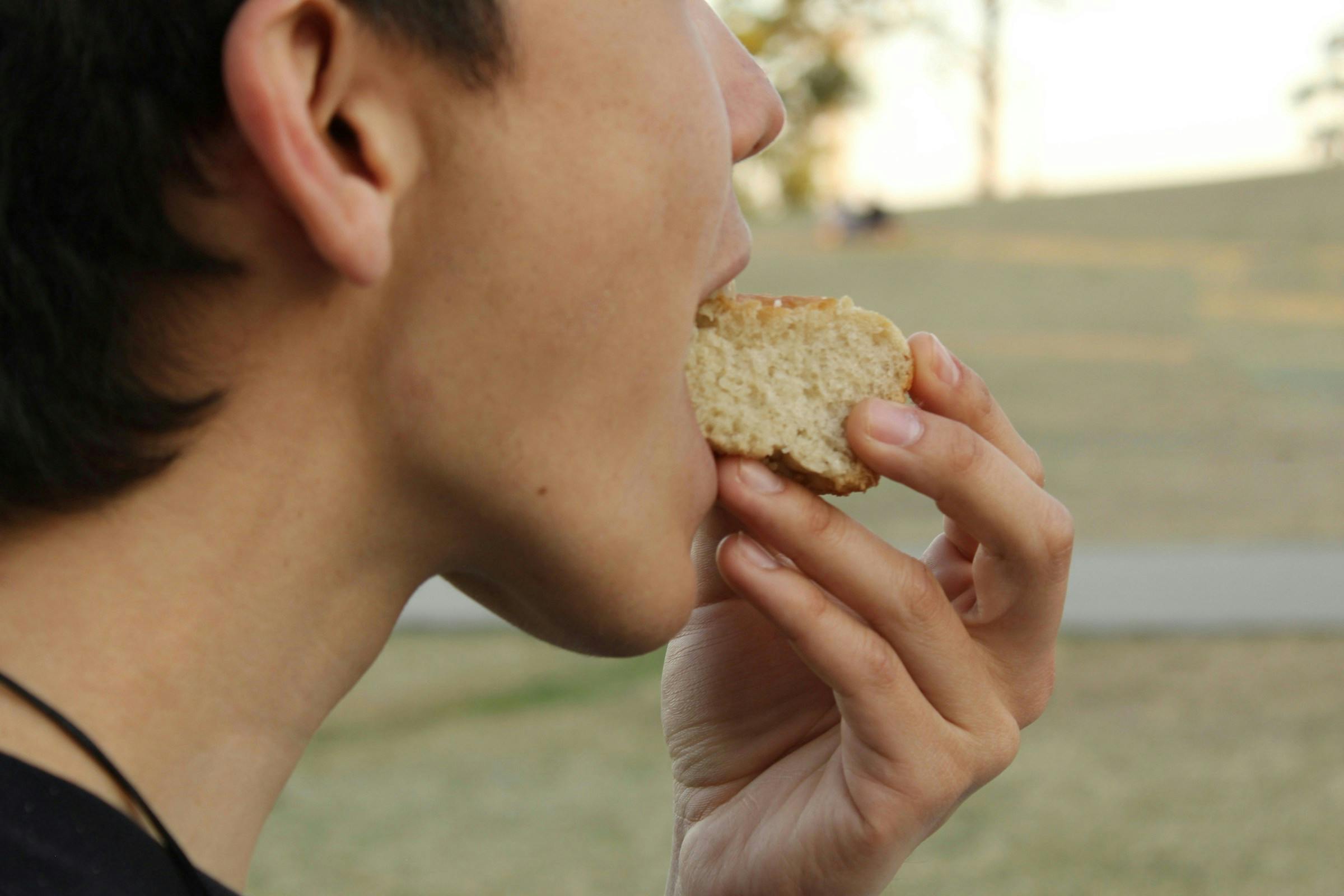Prediabetes and Carbs: How Many You Should Really Eat Daily (Backed by Science)
By Lilian E.
Reviewed by Kenya Bass, PA-C
Published Jun 25, 2025
8 min read

Getting diagnosed with prediabetes can feel overwhelming. You might hear terms like “cut carbs,” “watch your sugar,” or “go low-carb,” and wonder what it all really means. Should you stop eating bread completely? Can you still eat fruit? Is rice off the table?
If you’re asking how many carbs you should eat daily with prediabetes, you’re not alone. It’s one of the most common questions after a diagnosis—and for good reason. Carbohydrates have a direct impact on your blood sugar. But that doesn’t mean you need to avoid them altogether. The key is balance, timing, and choosing the right types of carbs.
This article will help you understand exactly what carbohydrates are, how they affect prediabetes, how much you really need each day, and how to build a way of eating that works for your body, not against it.
What Is Prediabetes?
Prediabetes means your blood sugar levels are higher than normal, but not high enough to be called type 2 diabetes. It’s a warning sign from your body, like a flashing yellow light. About 1 in 3 adults in the U.S. have prediabetes, but most don’t even know it. The good news? It’s often reversible with the right lifestyle changes.
Here’s how blood sugar levels are usually measured:
- Normal fasting blood sugar: less than 100 mg/dL
- Prediabetes: 100–125 mg/dL
- Diabetes: 126 mg/dL or higher
Another important test is the A1C, which shows your average blood sugar over the past 2–3 months. A normal A1C is below 5.7%, while prediabetes is between 5.7% and 6.4%.
So, where do carbs fit into all this? Carbohydrates are your body’s main source of energy, but they also raise your blood sugar more than fats or protein. That’s why understanding your carb intake is one of the most important steps in managing prediabetes.
What Are Carbohydrates, Really?
Carbohydrates—or “carbs”—are one of the three main nutrients your body needs, alongside protein and fat. But not all carbs are the same.

There are three main types:
- Sugars – These are the simplest type of carb. Found naturally in fruits, milk, and also added to candy, soda, and baked goods.
- Starches – Found in foods like bread, pasta, rice, and potatoes.
- Fiber – A special type of carb your body doesn’t digest. It slows down blood sugar spikes and helps with digestion.
When you eat carbs, your body breaks them down into glucose (sugar), which then enters your bloodstream. This raises your blood sugar. Insulin, a hormone made by your pancreas, helps move that sugar into your cells to use for energy.
If you have prediabetes, your body doesn’t respond to insulin as well as it should—this is called insulin resistance. That’s why blood sugar stays higher for longer, especially after eating carbs.
How Many Carbs Should You Eat Daily with Prediabetes?
Here’s the big question: How many carbs are okay?
There’s no one-size-fits-all number because everyone’s body is different. But we can look at some general guidelines and research to help you find a starting point.
The Standard Recommendation
Many health professionals suggest people with prediabetes start with about 45–60 grams of carbs per meal. That adds up to roughly 135–180 grams per day, depending on how many meals and snacks you eat.
For someone trying to lose weight or improve blood sugar quickly, a lower range—around 100–130 grams per day—can be more effective. Some people do well on even less (like 70–90 grams/day), but that kind of plan should be guided by a doctor or dietitian.
What matters most is the quality of the carbs and how your body responds to them.
Best (and Worst) Carbs for Prediabetes
Not all carbs are created equal. The ones that come in a bag or a box—like cookies, chips, white bread, and soda—can cause fast and sharp spikes in blood sugar. These are called refined carbs, and they’ve been stripped of most of their fiber, vitamins, and nutrients.
On the flip side, carbs that come from whole, unprocessed foods—like beans, vegetables, fruits, and whole grains—tend to digest more slowly. That means they raise blood sugar gradually and help keep it steady.

Here’s a simple way to think about it: If it grows in nature and hasn’t been messed with too much, it’s probably a better carb.
Let’s look at a few swaps:
- White bread → 100% whole grain or sprouted bread
- White rice → brown rice, quinoa, or cauliflower rice
- Sugary cereal → oats or Greek yogurt with berries
- Soda → water with lemon, herbal teas, or sparkling water
Carb Timing, Portioning, and Spacing
It’s not just how many carbs you eat—it’s also when you eat them and what you eat them with.
Let’s say you eat 60 grams of carbs from a bowl of white pasta. That might spike your blood sugar fast. But if you pair that same amount of pasta with grilled chicken and broccoli, the rise in blood sugar is slower and more manageable. That’s because protein, fiber, and healthy fats help slow digestion.
Try to spread your carbs throughout the day instead of loading them into one meal. This gives your body time to process them without overwhelming your blood sugar.
Here’s what a balanced day could look like:
- Breakfast: Veggie omelet + a slice of whole grain toast (~20g carbs)
- Lunch: Chicken salad + apple (~35g carbs)
- Snack: Handful of almonds + 1/2 banana (~15g carbs)
- Dinner: Grilled salmon, quinoa, roasted veggies (~40g carbs)
Total: ~110g of carbs, evenly spaced and balanced with protein and fiber.
The Role of Exercise, Stress, and Sleep in Carb Tolerance
Believe it or not, your body doesn’t process carbs the same way every day. Things like how active you are, how stressed you feel, and how well you sleep all affect how your body uses insulin and burns glucose.
- Exercise: Moving your body helps your muscles absorb glucose for energy, which lowers blood sugar. Even a 10-minute walk after meals can make a big difference.
- Stress: When you’re stressed, your body releases cortisol—a hormone that raises blood sugar. Chronic stress can make prediabetes worse.
- Sleep: Poor sleep makes your body more insulin resistant, meaning carbs raise your blood sugar even more the next day.
This means lifestyle habits are just as important as what’s on your plate. A healthy body is better equipped to handle carbs.
Do You Need to Count Carbs Forever?
Not necessarily. In the beginning, tracking carbs can help you learn what foods work for your body. But the ultimate goal is to eat mindfully, not obsessively.
Once you understand what a balanced plate looks like and how your body reacts, you might not need to count carbs at all. Instead, you’ll know to build meals around protein, fiber-rich carbs, and healthy fats. You’ll know to watch your portions and eat regularly. You’ll start to notice how you feel after certain meals—energized, tired, full, or hungry again.
Think of tracking as a tool, not a forever rule.
When to Seek Professional Help

If you’re feeling stuck or unsure, it’s always a good idea to talk to a registered dietitian, diabetes educator, or your doctor. They can help you:
- Set a personalized daily carb goal
- Monitor your blood sugar over time
- Adjust your diet based on your test results
- Decide if medication is needed
Remember, prediabetes isn’t a life sentence. But it does require action.
Final Tips to Take Charge of Your Carb Intake
Here’s the bottom line: You don’t have to fear carbs, but you do have to respect them.
Carbs are not evil. They give you energy, fuel your brain, and can be part of a healthy diet even with prediabetes. The trick is to eat the right kinds, in the right amounts, at the right times.
Start small. Swap out one processed carb for a better option. Add a walk after dinner. Learn how to read food labels. Choose more whole foods.
Over time, those small steps add up. And they can help you lower your blood sugar, lose weight if needed, and even reverse prediabetes altogether.
You’re in control—and your future health is worth the effort.
Smart Answers to Common Questions
1. Can I eat fruit if I have prediabetes?
Yes! Fruit has natural sugar, but it also contains fiber and nutrients. Choose whole fruits (like berries, apples, or oranges) over fruit juice or dried fruit. Stick to 1–2 servings a day.
2. Is a keto or low-carb diet best for prediabetes?
Some people do well on very low-carb diets, like keto, but they aren’t necessary for everyone. A moderate-carb plan focused on high-fiber, low-glycemic carbs works well for most people. It’s more sustainable too.
3. How many carbs are in a low-carb diet for prediabetes?
Low-carb diets usually aim for 50–130g of carbs per day. Talk to a professional before going very low-carb, especially if you’re on medication.
4. Can I reverse prediabetes without cutting out carbs completely?
Yes! Many people reverse prediabetes by eating balanced meals, increasing activity, reducing stress, and sleeping better. It’s not about cutting carbs out—it’s about making smart choices.
5. How fast can reducing carbs lower my A1C?
Some people see improvements in just 3–6 months. Your A1C reflects your average blood sugar over about 90 days. Regular tracking and lifestyle changes can make a big impact in that time.
Conclusion: Carbs Aren’t the Enemy—But They Need Your Attention
Prediabetes doesn’t mean your life is over. It means it’s time to pay attention—especially to carbs. By understanding how carbs work, choosing the right types, and making small changes, you can take charge of your health and prevent full-blown diabetes.
You don’t have to cut out bread forever. You just have to eat with intention. Balance, consistency, and awareness are your best tools.
So if you’re wondering how many carbs to eat daily with prediabetes, start with what works for your body, and build from there.
Share this article

Healthspan Categories: 10 Proven Ways to Measure and Improve Your Health for Longer, Better Living
Lilian E.
Sep 24, 202515 min read

Low Sodium Diet: Simple Guidelines, Food Lists, and Tips for Better Health
Lilian E.
Sep 30, 202512 min read

Tips for Staying Healthy: 12 Simple Habits for Energy, Longevity, and Better Living
Editorial Team
Sep 30, 202510 min read